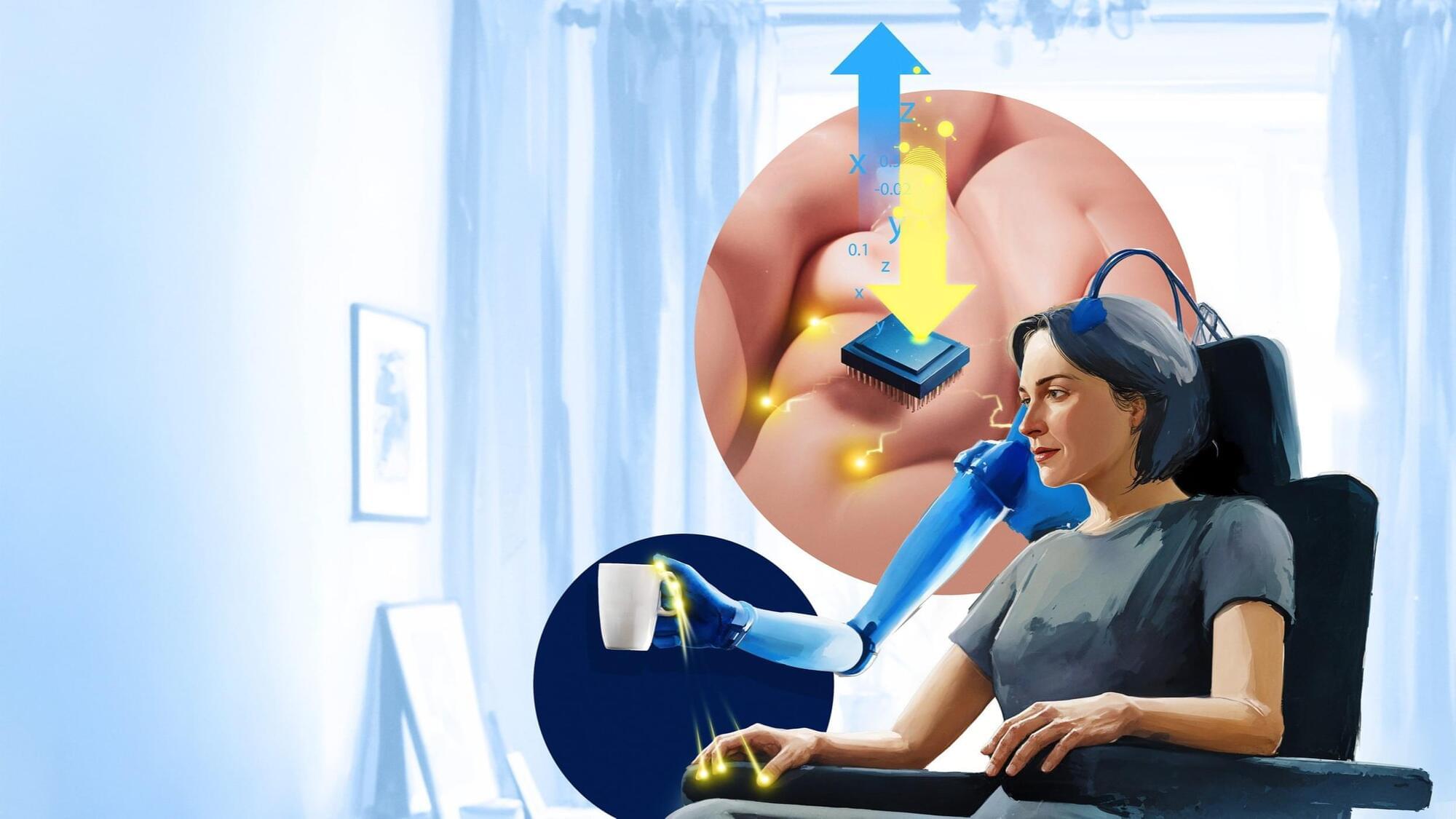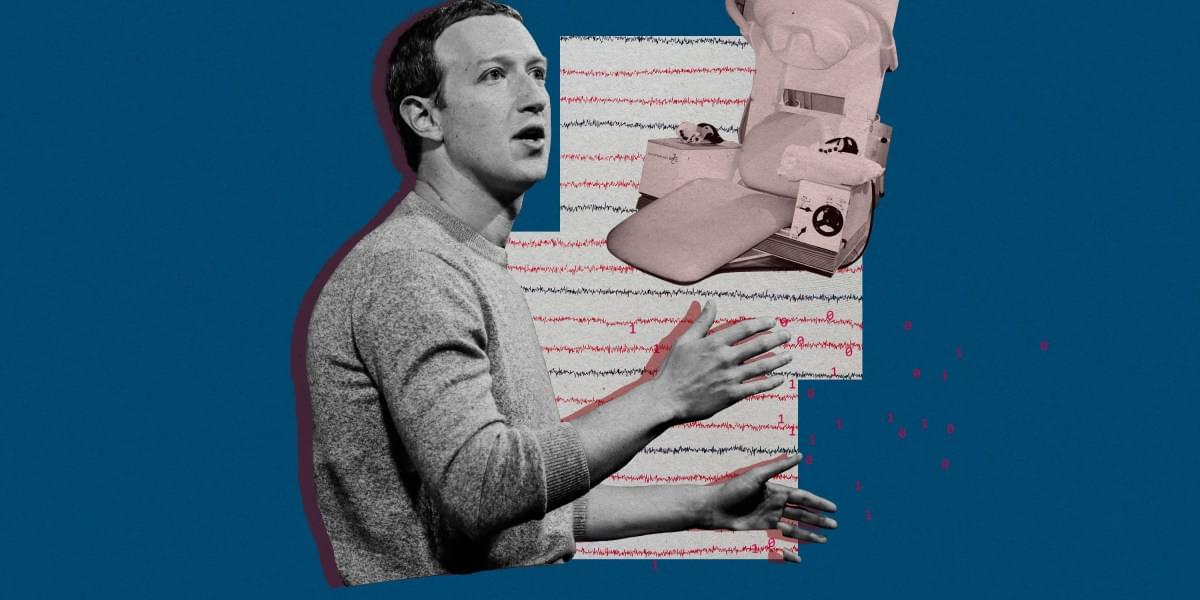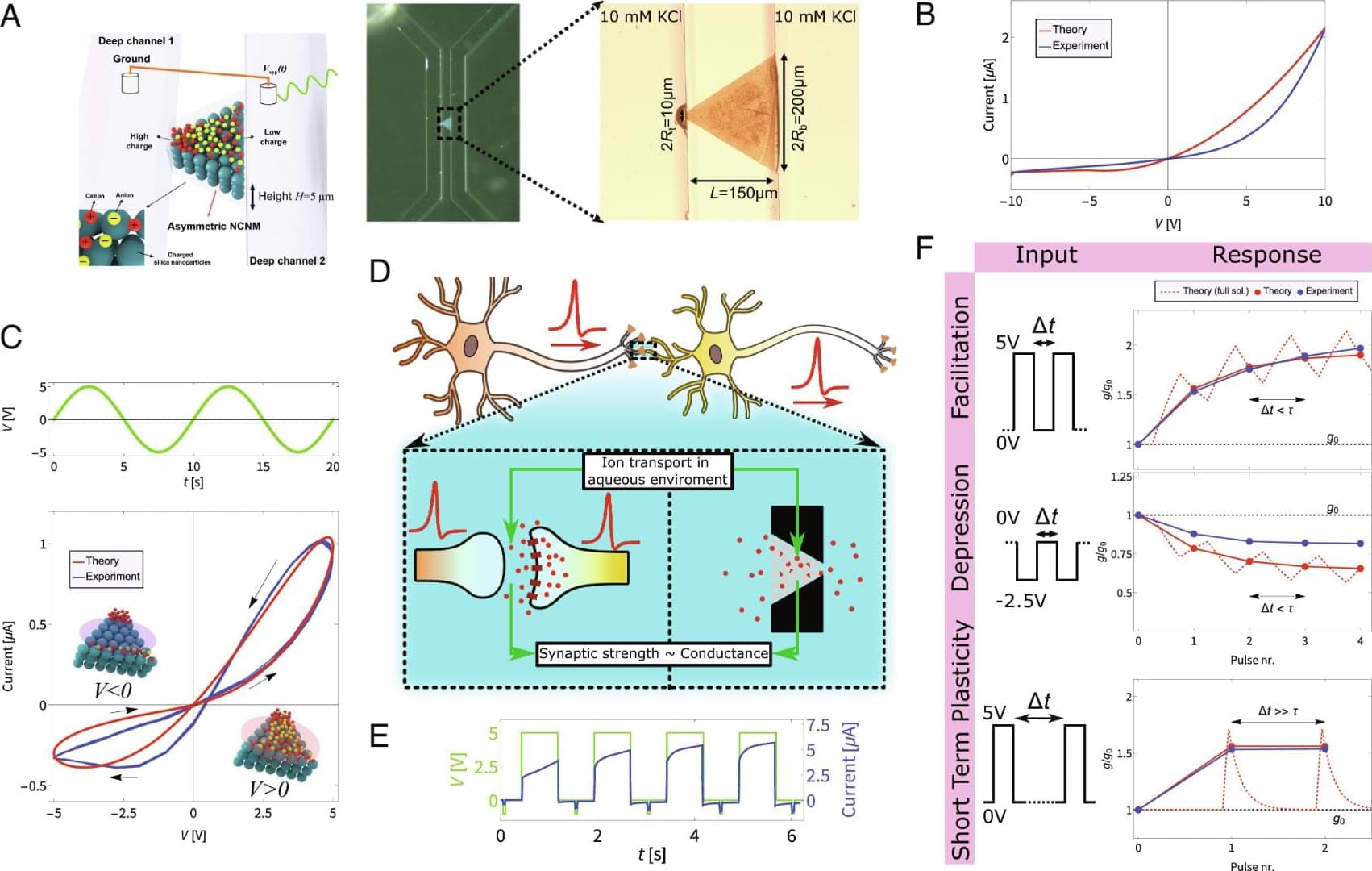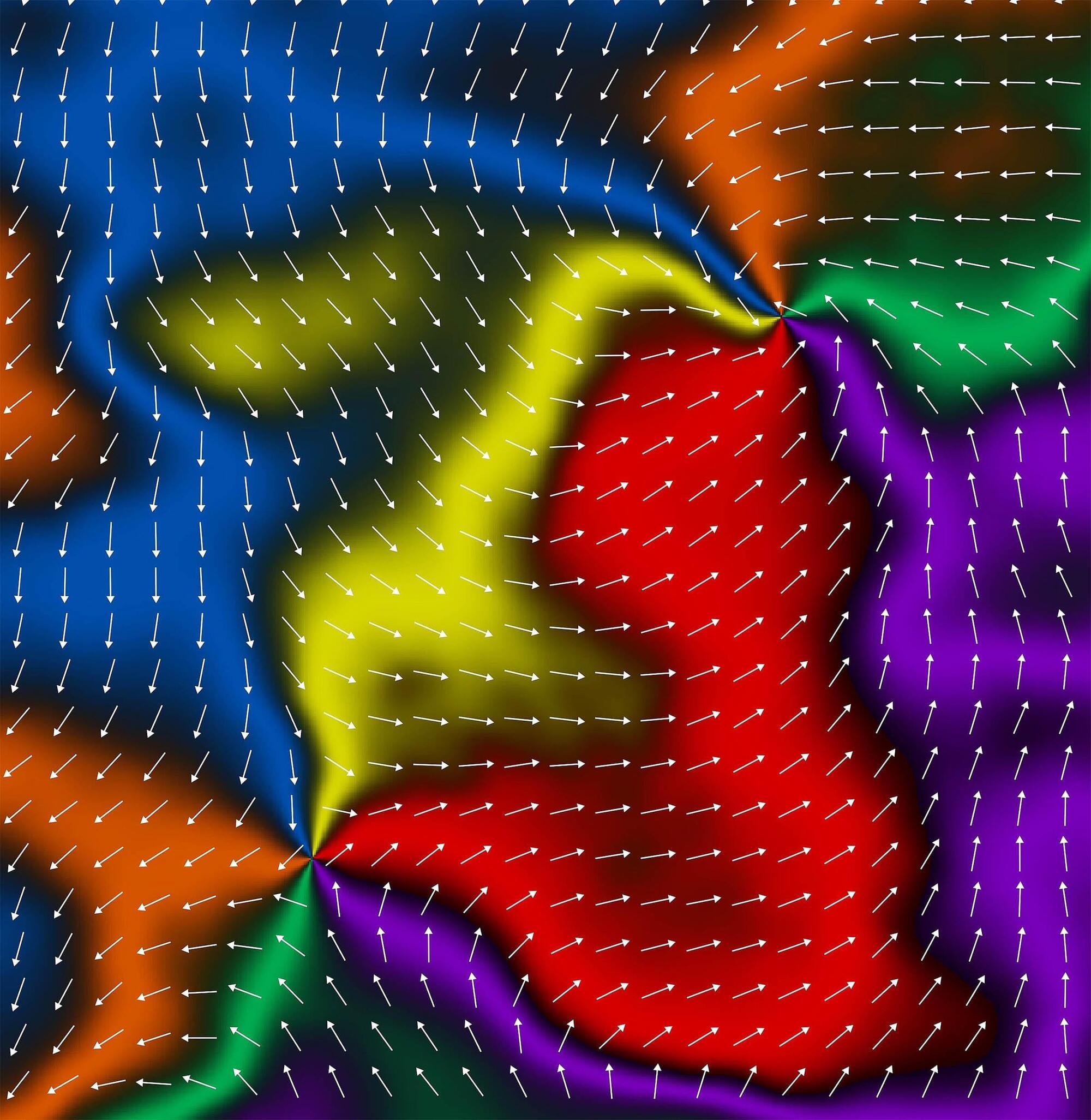Year 2024 face_with_colon_three
Our memristor is inspired and supported by a comprehensive theory directly derived from the underlying physical equations of diffusive and electric continuum ion transport. We experimentally quantitatively verified the predictions of our theory on multiple occasions, among which the specific and surprising prediction that the memory retention time of the channel depends on the channel diffusion time, despite the channel being constantly voltage-driven. The theory exclusively relies on physical parameters, such as channel dimensions and ion concentrations, and enabled streamlined experimentation by pinpointing the relevant signal timescales, signal voltages, and suitable reservoir computing protocol. Additionally, we identify an inhomogeneous charge density as the key ingredient for iontronic channels to exhibit current rectification (provided they are well described by slab-averaged PNP equations). Consequently, our theory paves the way for targeted advancements in iontronic circuits and facilitates efficient exploration of their diverse applications.
For future prospects, a next step is the integration of multiple devices, where the flexible fabrication methods do offer a clear path toward circuits that couple multiple channels. Additionally, optimizing the device to exhibit strong conductance modulation for lower voltages would be of interest to bring electric potentials found in nature into the scope of possible inputs and reduce the energy consumption for conductance modulation. From a theoretical perspective, the understanding of the (origin of the) inhomogeneous space charge and the surface conductance is still somewhat limited. These contain (physical) parameters that are now partially chosen from a reasonable physical regime to yield good agreement, but do not directly follow from underlying physical equations. We also assume that the inhomogeneous ionic space charge distribution is constant, while it might well be voltage-dependent.







